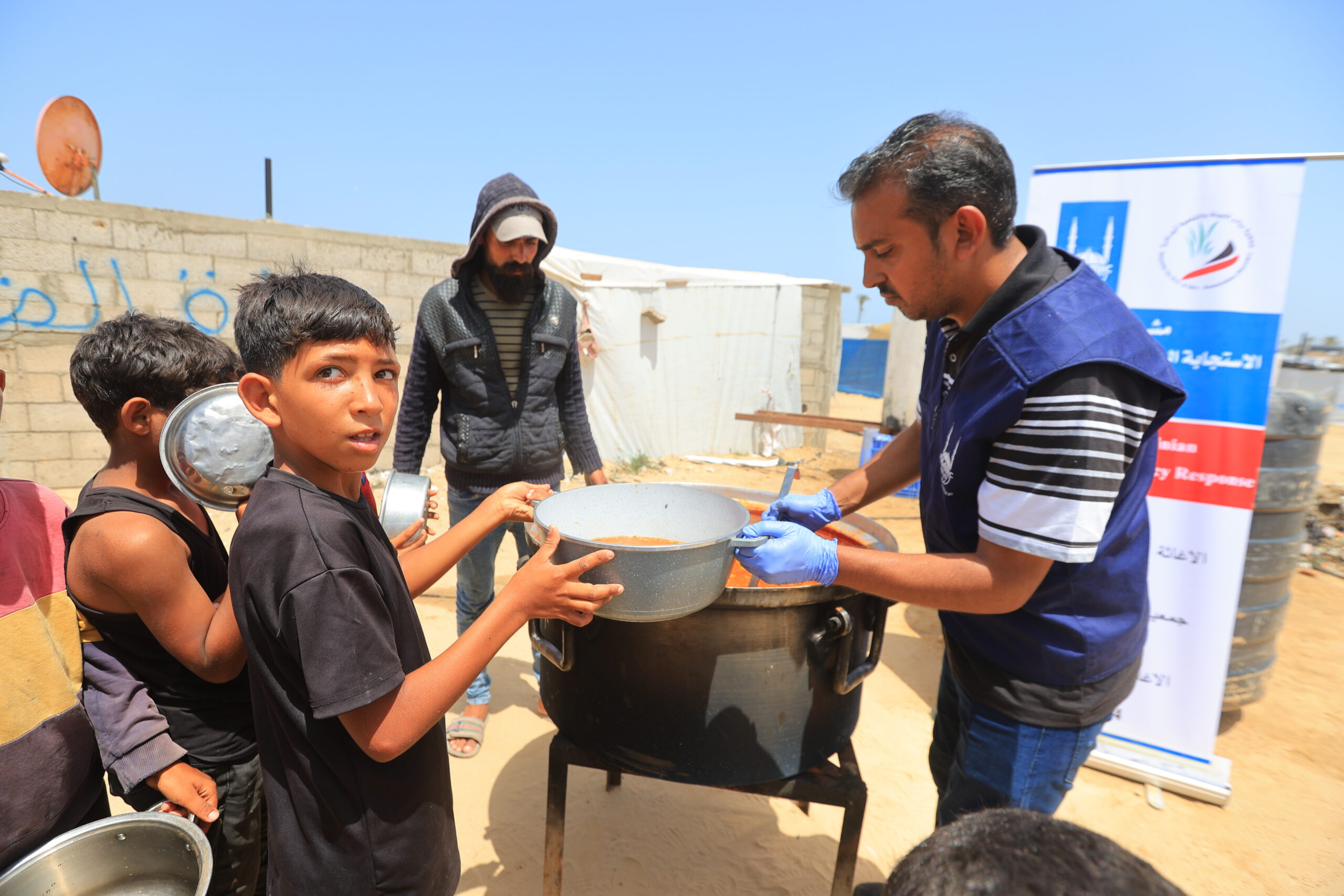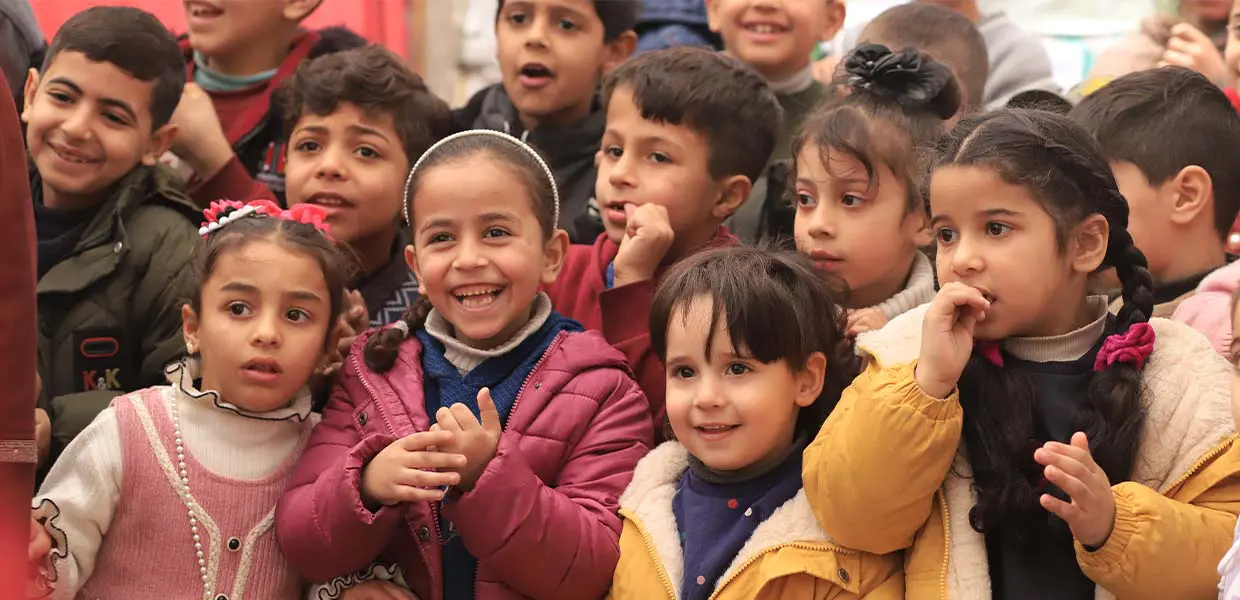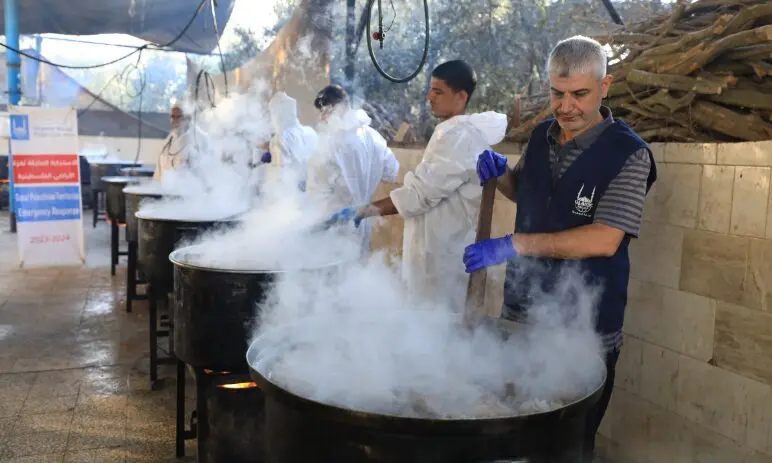
Did you know that more than 800 million people worldwide go hungry, yet we produce enough food to feed everyone? Hunger is often seen as a result of there not being enough food to go around. However, usually it’s more complicated than that.
This World Hunger Day is an opportunity to bring into focus how hunger is driven by more than just the lack of food. In this article, we look at the glaring examples of worsening hunger crises in Somalia and Gaza.
How Climate Breakdown is Affecting Somalia
The situation is dire in Somalia. Nearly 3.5 million people are expected to face acute food insecurity from April to June 2024.
So what’s causing this? A combination of factors – El Niño-induced flooding, ongoing conflict, climate change, and economic instability – are hitting hard.
Human-caused climate change has increased the frequency and severity of droughts. This, compounded by decades of conflict that, have significantly eroded the country’s institutions.
This combined damage to Somalia’s domestic food production has made the country dangerously reliant on imported grains – specifically from Ukraine and Russia.
Climate Change and Hunger in Somalia
Shortly after Somalia began to recover from the brink of famine, the country was struck by heavy El-Niño induced rainfall and floods in late 2023.
This wiped away lives and livelihoods. Around 1.5 million hectares of farmland are at risk – with farmers struggling with failed crops and reduced incomes.
Displacing almost half a million people, this rainfall was described as “once-in-a-century event” by the UN. It highlighted Somalia’s extreme vulnerability to climate breakdown.
Climate-induced displacement also pushes farmers away from their rural homes to urban areas, further hammering production down. And just last month, the situation in Somalia worsened after being hit by the Gu (April to June) rains.
Although this rainfall is expected to marginally improve the food security situation, risk of famine remains in several areas. Recovering from the aftermath of climate extremes will pose significant challenges for the people of Somalia.
Somalia Faces Worsening Climate-Included Disasters
Let’s be clear – this is no “natural disaster.” Somalia is experiencing more frequent and longer-lasting droughts and unpredictable rainfall. These are all becoming more severe, as a direct result of climate change.
Despite years of humanitarian aid and intervention, progress has been slow. Chronic underfunding and a lack of long-term investment have left people in Somalia vulnerable to recurring crises.
While there have been efforts to build resilience and prepare for disasters by aid agencies, including Islamic Relief, these initiatives across the sector have often fallen short. They are hampered by slow response times, limited resources and a failure to upscale action.
But perhaps the greatest barrier to improvement lies in political will — or the lack thereof. Somalia’s plight has not gone unnoticed, yet sustained commitment from donors and policymakers remains lacking.
Until there is a concerted effort to address the root causes of hunger and invest in long-term solutions, Somalia’s future hangs in the balance.
What is the link between conflict and hunger?
Conflict is the biggest single cause of hunger in the world today. Nearly 135 million people in conflict-affected countries face acute food insecurity – almost half of the global number.
Conflict affects food security and nutrition in many ways. It can reduce the amount of food available, disrupt food production and affect people’s ability to access food and markets. Gaza is no different, where the word ‘hunger’ carries a weight far beyond its dictionary definition.
The Escalating Situation in Gaza
Since October 2023, the tightening siege imposed by Israel has created a stranglehold on the flow of goods and humanitarian aid, plunging Gaza into a humanitarian catastrophe, with famine already taking hold in the north.
The occupation and collective punishment of Gaza, the indiscriminate bombardment, and the denial of aid trucks are not just contributing to food insecurity. They are actively perpetuating a prolonged cycle of deprivation and despair for over 2.3 million people. So much so that famine is now inevitable and imminent across the Gaza Strip, according to the latest IPC report.
Occupying Forces Worsening the Hunger Crisis
Israel has completely denied access to food resources to all civilians of the Strip, half of whom are children. This includes bombing mills, bakeries, grocery stores, corner shops, and markets.
They also are destroying crops and agricultural lands, killing livestock, and targeting boats and fishing equipment, as well as water tanks.
People are dying as a direct result. So far, at least 27 people have been reported to have died from malnutrition.
We can expect that this number to rise for as long as the siege and bombardment continues. The UN has even warned that children in Gaza are being starved at the fastest rate the world has ever known.
Their survival depends on more food, fuel and water entering Gaza immediately, as well as an immediate and permanent ceasefire.

The Current Situation
Out of the 130 bakeries that were functional in Gaza before October 2023, only 15 were open in March. Others have been destroyed or have ground to a halt due to fuel shortages.
The 1.9 million people forced to flee their homes also have little access to cooking utensils, water, and fuel, which prevents them from preparing food when it becomes available.
Efforts to increase aid into Gaza are crucial but attempts like airdropping or using new maritime corridors are futile – they are impractical, costly, and undignified. Five people were killed when the parachutes or air-dropped aid did not open.
Israel has also been targeting civilians seeking humanitarian aid, in what has been dubbed as a series of ‘flour massacres’, which have killed over 118 people.
What’s happening now in Gaza is a textbook example of how hunger can be man-made and down to political decisions. Let’s be clear – Israel can open all the land crossings and allow the entry of desperately needed aid to reach people in Gaza. This is not happening because Gaza has simply run out of food or there has been a poor harvest. It is because starvation is being used as a weapon of war.
How We Can Help Combat World Hunger
As we mark World Hunger Day, it’s crucial to recognise the interconnectedness of global hunger with climate and conflict.
The plight of Somalia and the Gaza Strip are stark reminders of the urgent need for action and a wakeup call for our collective conscience.
We cannot afford to let world leaders get away with empty words and inaction, we can and must work towards a reality where no one is forced to go hungry.
Written by Suraiya Rahman, Campaigns and Public Affairs Coordinator at Islamic Relief UK.
Help Combat Hunger with Food Packs
Provide lifesaving food packs that help feed vulnerable families the nutritious meals they need to achieve their full potential.





